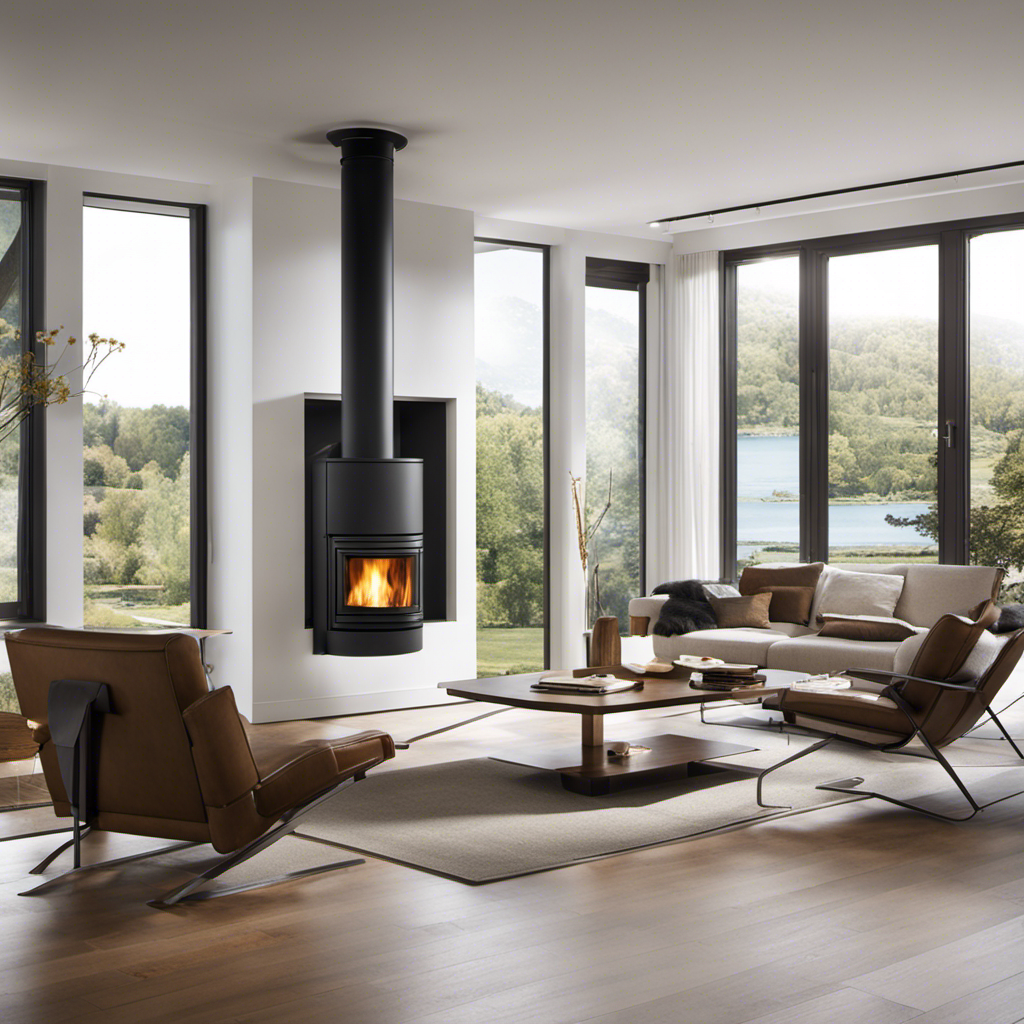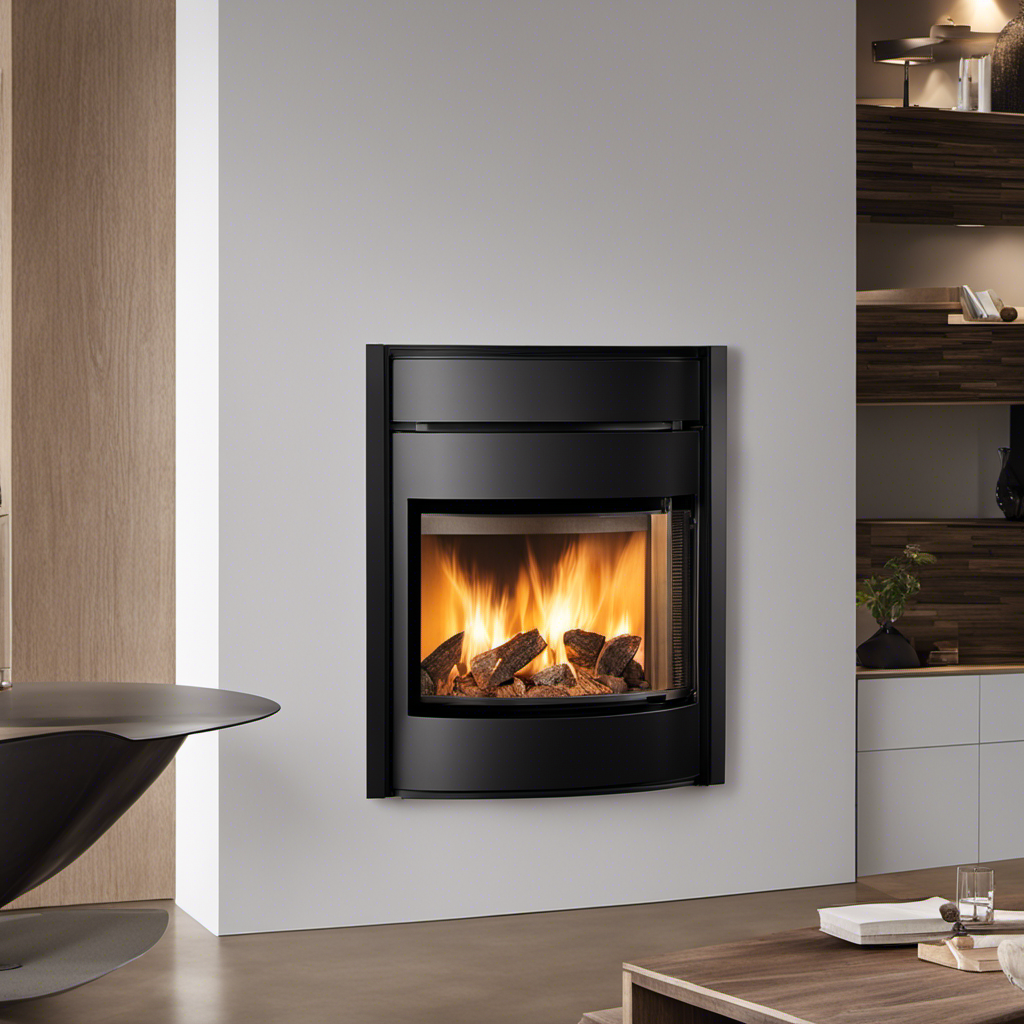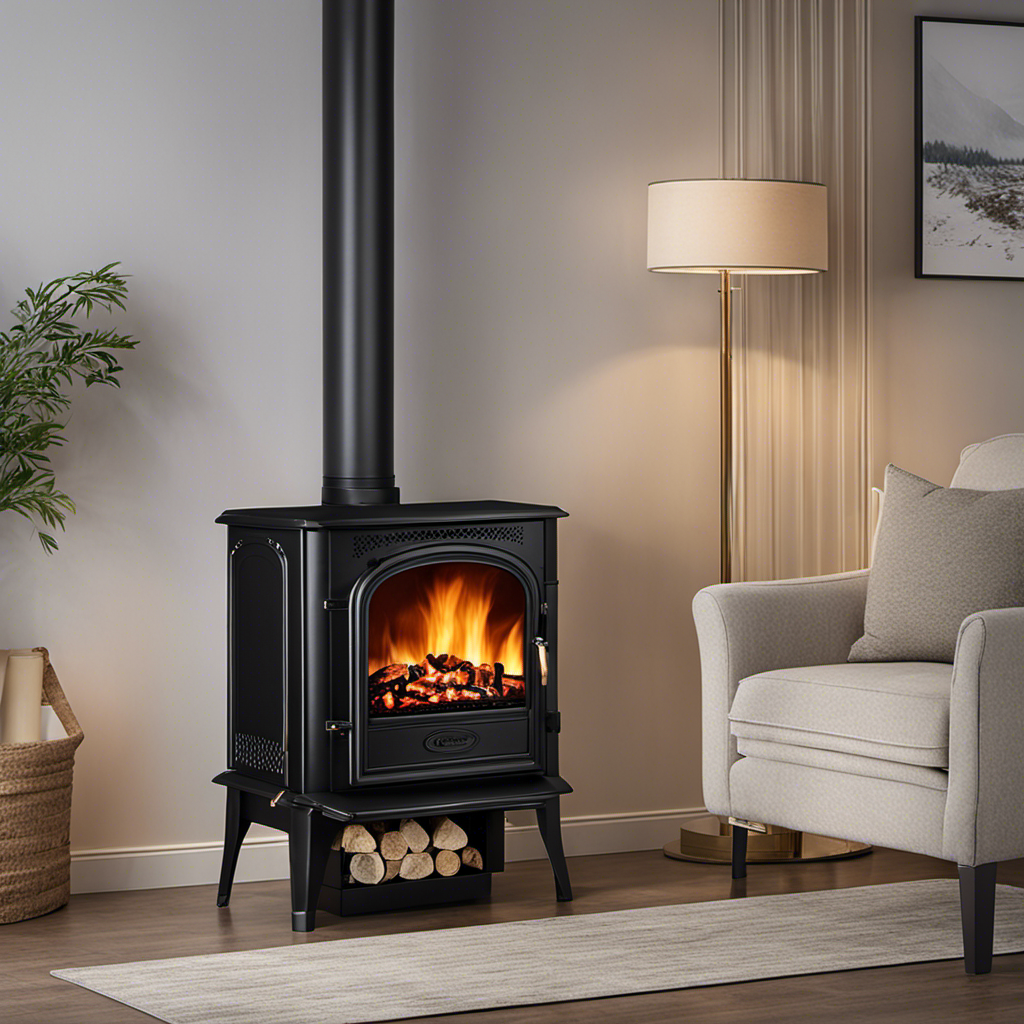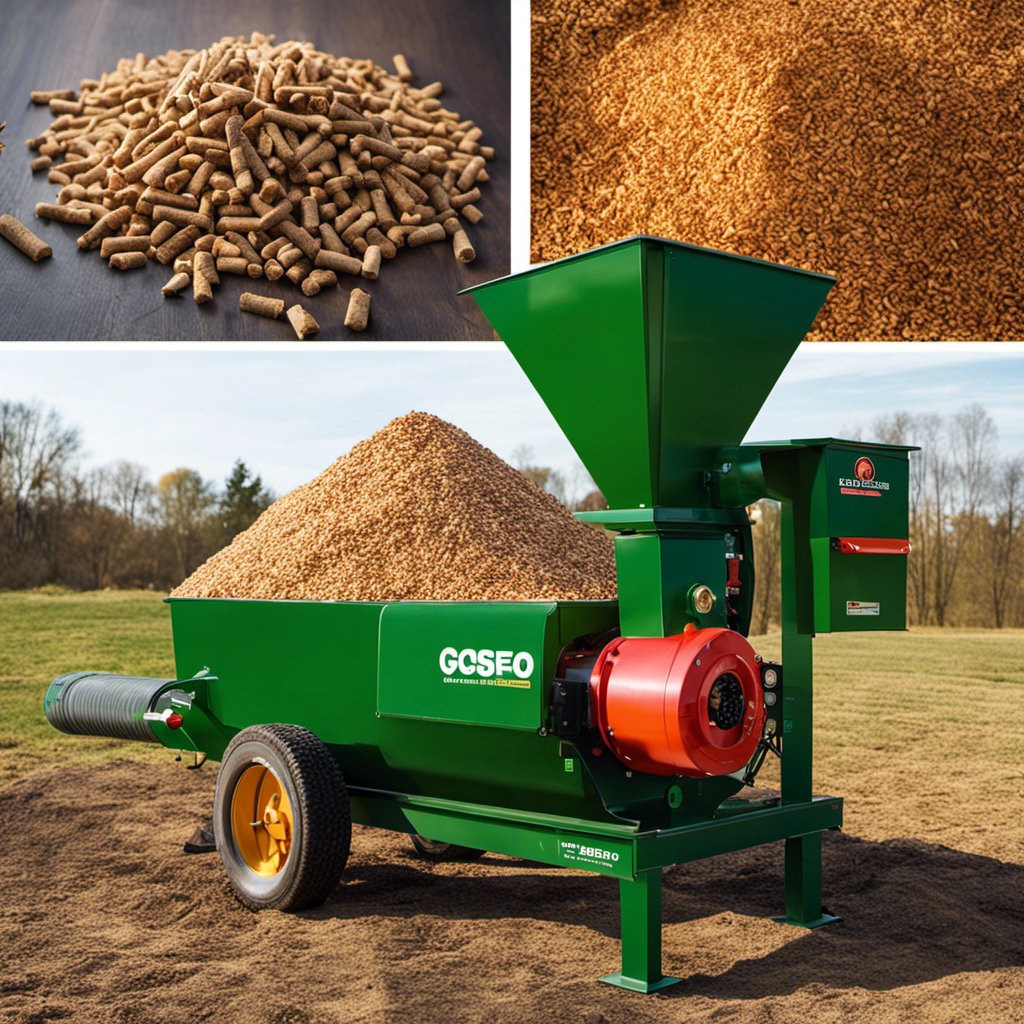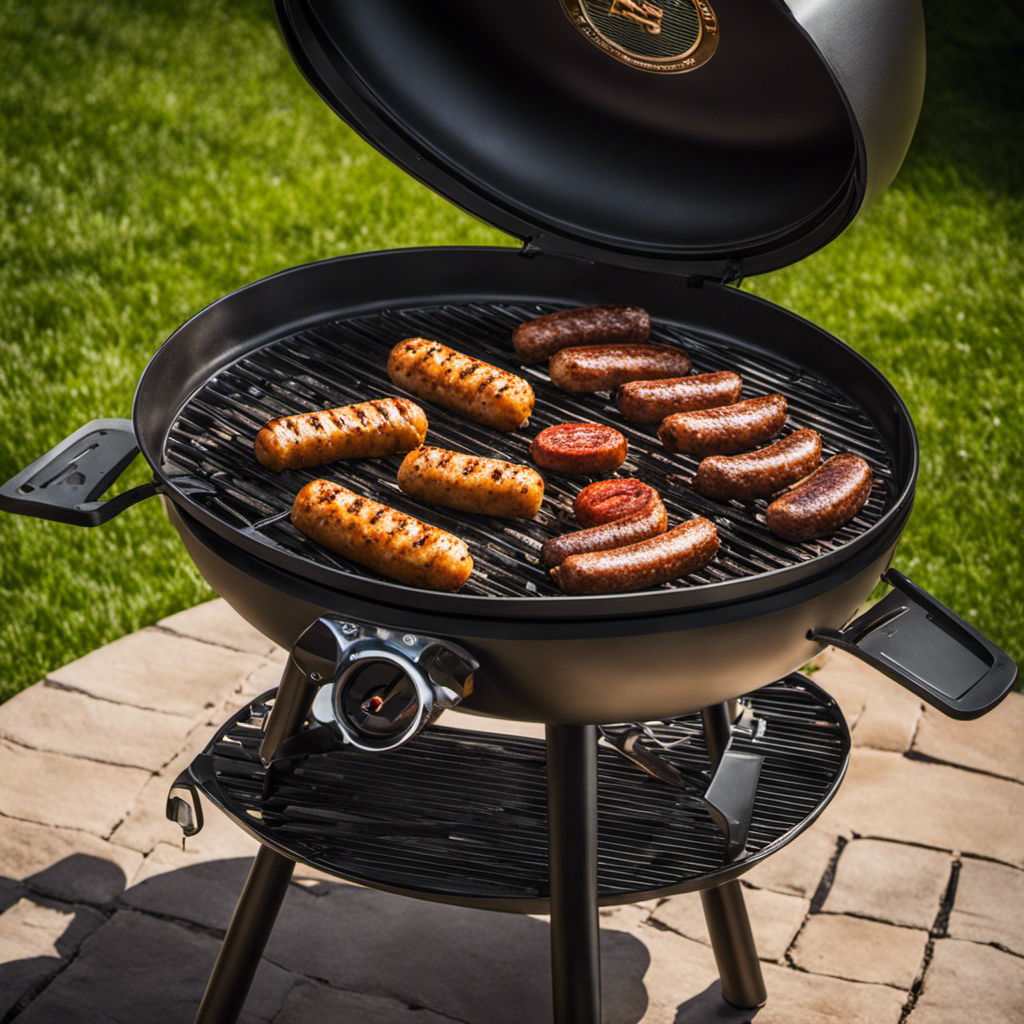Thinking about adding a pellet stove to your home? Curious about the most effective ways to vent it? Let’s dive into this topic together!
Whether you have an existing chimney or not, we’ll discuss venting through a dedicated flue, utilizing a properly sized flue liner, or venting out of an external wall.
It’s crucial to consult with a certified installer, as factors like your home layout and building codes play a role. Proper installation and ventilation are key to a safe and effective heating system.
Let’s dive in and discover the best options!
Key Takeaways
- Pellet stoves can be vented through a dedicated flue, an existing chimney with a flue liner, or an external wall.
- Professional consultation is important to determine the best ventilation method based on the home layout and building codes.
- Pellet stoves can be installed without a chimney by venting through an external wall or internally through the roof.
- When using a chimney, it must be in good condition, tall enough for safe dispersal of exhaust gases, and equipped with a chimney cap.
Venting Through a Dedicated Flue
Venting through a dedicated flue is a common and efficient method for safely venting pellet stoves. This method involves installing a flue pipe that connects directly to the stove and extends up through the roof. The pros of using a dedicated flue include effective removal of combustion byproducts, prevention of backdrafts and smoke entering the home, and increased efficiency in heating.
However, there are a few cons to consider as well. Proper maintenance is crucial to ensure the flue remains clear of any blockages or creosote buildup. Regular cleaning and inspection are necessary to prevent potential fire hazards. It’s also important to ensure the flue pipe is properly sealed to prevent any leaks.
Following the manufacturer’s guidelines and consulting with a certified technician will help ensure the proper installation and maintenance of a dedicated flue for pellet stoves.
Venting Through an Existing Chimney
When considering venting through an existing chimney, it’s important to ensure the flue liner is in good condition and can withstand high temperatures. Using a chimney for pellet stove ventilation offers several benefits.
Firstly, it allows for efficient dispersal of exhaust gases, ensuring proper ventilation and preventing the buildup of harmful fumes inside the home. Additionally, using an existing chimney eliminates the need for additional installation work, saving time and money.
However, there are also pros and cons of venting through an external wall. On the positive side, venting through an external wall can provide more flexibility in terms of stove placement and may be easier to install in certain situations. However, it requires more extensive installation work and may not provide as efficient ventilation as using a chimney.
Consulting with a professional installer is essential to determine the best ventilation option for your specific needs.
Venting Through an External Wall
As homeowners, we should consider the installation of a flue above the eaves when venting a pellet stove through an external wall. Venting through an external wall has both pros and cons compared to venting internally or through the roof.
| Pros | Cons |
|---|---|
| Requires less installation work | May require additional materials |
| Allows for more flexible placement of the stove | May require cutting through exterior walls |
| Provides better ventilation and exhaust dispersal | May require longer flue length |
On the other hand, venting internally and through the roof also has its own set of pros and cons.
| Pros | Cons |
|---|---|
| Utilizes existing chimney or roof vent | May require professional installation |
| Can provide a more aesthetically pleasing option | Requires proper sealing to prevent leaks |
| May be a more cost-effective solution | Limited flexibility in stove placement |
Ultimately, the choice between venting through an external wall or internally and through the roof will depend on the specific requirements and constraints of your home. Consulting with a professional installer is recommended to determine the best ventilation option for your pellet stove.
Factors to Consider for Ventilation Method
In our home, we need to carefully consider the layout and local building codes when deciding on the most suitable ventilation method for our pellet stove. There are several factors to consider for the ventilation method, and one option to explore is external wall venting.
Venting the pellet stove through an external wall has its advantages. Firstly, it eliminates the need for a chimney, making installation easier and more cost-effective. Additionally, external wall venting allows for better ventilation, as the exhaust gases are released directly outside. This helps maintain indoor air quality and prevents the buildup of harmful pollutants.
However, it’s important to ensure that the chosen external wall venting method complies with local building codes and regulations. Consulting with a certified professional is essential to ensure a safe and efficient ventilation system for our pellet stove.
Importance of Consulting With Certified Installer
Consulting with a certified installer is crucial to ensure the proper installation and venting of our pellet stove, as they have the expertise and knowledge to navigate local building codes and regulations. By seeking professional guidance, we can benefit from their experience and avoid costly mistakes. Here are three reasons why consulting with a certified installer is of utmost importance:
-
Expertise: Certified installers have undergone training and possess in-depth knowledge of pellet stove installation and venting requirements. They can assess the specific needs of our home and recommend the most suitable ventilation method.
-
Compliance with Building Codes: Local building codes and regulations vary, and it’s essential to comply with them when installing a pellet stove. Certified installers are well-versed in these requirements and can ensure that our installation meets all necessary codes and regulations.
-
Safety: Proper installation and venting are critical for the safe operation of a pellet stove. Certified installers understand the potential risks and can implement necessary safety measures to protect our home and loved ones.
Installation Without a Chimney
By exploring alternatives to traditional chimney installations, we can find suitable options for installing our pellet stove in homes without a chimney. When it comes to installation without a chimney, there are pros and cons to consider.
One option is venting the pellet stove out of an external wall. This method requires installing a flue above the eaves. It offers convenience and eliminates the need for a chimney. However, it may require more installation work compared to using an existing chimney.
Another option is venting the pellet stove internally and through the roof. This method requires professional consultation to ensure proper and safe installation. Safety considerations include proper ventilation and compliance with local building codes.
Ultimately, it’s important to consult with a certified installer to determine the best option for a chimney-less pellet stove installation.
Venting Through an External Wall With Flue Above Eaves
When considering installation without a chimney, one option we found is venting the pellet stove out of an external wall with a flue above the eaves. This method has its own set of pros and cons.
Pros of Venting Through an External Wall:
- No need for an existing chimney or flue liner.
- Can be more cost-effective compared to installing a new chimney.
- Offers flexibility in stove placement and installation.
Cons of Venting Through an External Wall:
- Requires cutting a hole in the wall for the flue installation.
- May require additional insulation to prevent heat loss through the external wall.
- Limited options for stove location due to wall placement.
Installation considerations for venting pellet stoves above the eaves include:
- Ensuring proper clearance from combustible materials.
- Choosing the right size and type of flue for the stove.
- Adhering to local building codes and regulations.
Consulting with a certified installer is crucial to determine the feasibility and safety of this installation method.
Venting Internally and Through the Roof
One option we found for venting pellet stoves without a chimney is internally through the roof, which offers its own set of advantages and considerations.
The advantages of internal venting include the ability to install the venting system within the confines of the home, eliminating the need for an external wall or chimney. This can be particularly beneficial for homes with limited space or architectural restrictions.
However, there are potential issues with roof venting that need to be addressed. These include the risk of leaks or water damage if the installation isn’t done properly, as well as the need to ensure that the vent is clear of any obstructions such as overhanging trees or other structures.
It’s important to consult with a professional installer to ensure that the internal venting system is installed correctly and meets all safety requirements.
Importance of Professional Consultation for Safe Installation
Consulting with a certified installer is crucial to ensure the safe installation of a pellet stove and proper adherence to all necessary safety requirements. Here are three benefits of professional consultation in pellet stove installation:
-
Expertise: Certified installers have the knowledge and experience to assess your home’s specific needs and recommend the best ventilation options. They can determine the appropriate chimney type, evaluate the condition of existing flues, and ensure proper ventilation for optimal stove performance.
-
Compliance with codes and regulations: Professional installers are familiar with local building codes and safety regulations. They’ll ensure that your pellet stove installation meets all necessary requirements, such as clearance distances from combustible materials and proper venting procedures, to prevent potential hazards and ensure safety.
-
Peace of mind: By consulting with a certified installer, you can have confidence in the safe and secure installation of your pellet stove. They’ll handle all aspects of the installation process, from assessing the site to selecting the right components and ensuring proper ventilation. This professional consultation will give you peace of mind knowing that your pellet stove is installed correctly and operates safely.
Using an Existing Chimney for Pellet Stoves
When it comes to using an existing chimney for pellet stoves, there are both advantages and potential challenges to consider. One of the advantages is that it can save you the cost and effort of installing a new venting system. If your chimney is in good condition and has a properly sized flue liner, it can effectively vent the exhaust gases from the pellet stove.
However, there are potential challenges that may arise. The chimney must be tall enough to ensure the safe dispersal of the exhaust gases. Additionally, a chimney cap is essential to keep out rain, snow, and debris. Before using the existing chimney, it’s crucial to have it inspected and cleaned to ensure it meets the necessary safety standards.
Overall, using an existing chimney can be a convenient option, but it requires proper maintenance and consideration of safety measures.
Requirements for Chimney Flue Liner and Condition
To ensure safe and proper ventilation for our pellet stove, we need to carefully consider the requirements and condition of our chimney flue liner. The chimney flue liner plays a vital role in the efficient operation of the pellet stove.
Here are three key points to remember:
-
Size and Material: The flue liner must be properly sized to match the output of the pellet stove. It should also be made of a durable material, such as stainless steel, that can withstand the high temperatures produced by the stove.
-
Regular Maintenance: Regular maintenance and cleaning of the chimney flue liner are essential to prevent the buildup of creosote and other debris. This buildup can restrict airflow and increase the risk of chimney fires.
-
Professional Inspection: It’s important to have the chimney flue liner inspected by a certified technician at least once a year. They can identify any damage or deterioration and recommend appropriate repairs or replacements.
Choosing the Right Chimney for Pellet Stoves
We should consider the type of stove and chimney when selecting the appropriate flue for our pellet stove. Choosing the right chimney for a pellet stove is crucial for efficient and safe ventilation. Most pellet stoves require a stainless steel liner for a masonry chimney. This ensures durability and resistance to high temperatures.
When deciding between internal and external flues, it’s important to note that internal flues are easier to install but provide less ventilation compared to external flues. On the other hand, external flues offer better ventilation but require more installation work. The benefits of external flues include improved airflow and reduced risk of condensation buildup.
To make an informed decision, consulting a professional is recommended to determine the appropriate chimney materials and type for our pellet stove.
What Are the Ventilation Requirements for Wood Pellet Stoves?
When it comes to the ventilation requirements for wood pellet stoves, it’s essential to ensure proper airflow for efficient operation. One of the key advantages of wood pellet stoves is that they require a venting system to remove combustion gases and maintain a safe, healthy indoor environment.
Can Wood Pellet Stoves Offer the Same Ventilation Options as Traditional Pellet Stoves?
Wood pellet stoves offer the same ventilation options as traditional pellet stoves. This means that you can still enjoy the benefits of wood pellet stoves, such as eco-friendly heating and efficient fuel usage, while having the flexibility to choose the ventilation setup that works best for your home.
Frequently Asked Questions
Are Pellet Stoves the Only Type of Stoves That Can Be Vented Through a Dedicated Flue?
No, pellet stoves aren’t the only type of stoves that can be vented through a dedicated flue. Other types of stoves, such as wood-burning stoves or gas stoves, can also be vented through a dedicated flue.
However, it’s important to note that the specific requirements for venting may vary depending on the type of stove. It’s always recommended to consult with a certified installer to determine the best ventilation options for your specific stove.
Can a Pellet Stove Be Vented Through an Existing Chimney With a Damaged Flue Liner?
Yes, a pellet stove can be vented through an existing chimney with a damaged flue liner, but it isn’t recommended. A damaged flue liner can lead to improper ventilation and potential safety hazards.
It’s important to have a properly functioning flue liner to ensure the safe dispersal of exhaust gases. Consulting with a certified installer is crucial to determine the best ventilation options for pellet stoves and to ensure proper installation and venting.
What Are the Advantages and Disadvantages of Venting a Pellet Stove Out of an External Wall?
Venting a pellet stove out of an external wall has both advantages and disadvantages.
The main advantage is that it eliminates the need for a chimney or flue liner, making installation easier and more cost-effective. Additionally, external venting can provide better ventilation and reduce the risk of smoke entering the home.
However, there are also disadvantages. External venting requires cutting a hole in the wall, which can be aesthetically unappealing. It can also be more prone to weather-related issues, such as wind drafts or snow buildup.
Besides Layout and Building Codes, What Other Factors Should Be Considered When Choosing a Ventilation Method for a Pellet Stove?
Ventilation considerations for pellet stoves include factors such as:
- The size of the room
- The location of windows and doors
- The overall insulation of the home
Proper ventilation is crucial for efficient operation and to prevent the buildup of harmful gases. It’s important to consider the type of installation, whether it be through an existing chimney or an external wall. Consulting with a professional is recommended to ensure compliance with local building codes and to determine the optimal ventilation options for the specific pellet stove model.
Why Is It Important to Consult With a Certified Installer Before Deciding on a Ventilation Method for a Pellet Stove?
It is important to consult with a certified installer before deciding on a ventilation method for a pellet stove due to the importance of professional advice and safety concerns.
A certified installer will have the necessary knowledge and expertise to assess the specific requirements of your home and recommend the most suitable ventilation option.
They’ll ensure that the installation is done correctly, adhering to local building codes and regulations, to ensure the safe operation of the pellet stove and minimize any potential risks or hazards.
Conclusion
In conclusion, when it comes to choosing the best ventilation options for pellet stoves, it’s important to consider factors such as the layout of your home and local building codes. Consulting with a certified installer is crucial to ensure safe and effective installation.
Whether you opt for a dedicated flue, an existing chimney with a flue liner, or venting through an external wall, proper ventilation is essential. For example, in a case study, a homeowner with limited space utilized a dedicated flue to safely and efficiently vent their pellet stove.
Logan’s affair with adventure began in childhood. He hailed from a small town where vast forests bordered one side and endless shores stretched on the other. His days were spent exploring uncharted woods, climbing tall trees, or listening to the tales of old sailors. This early immersion in a world brimming with stories and mysteries became the foundation of his passion for writing.

